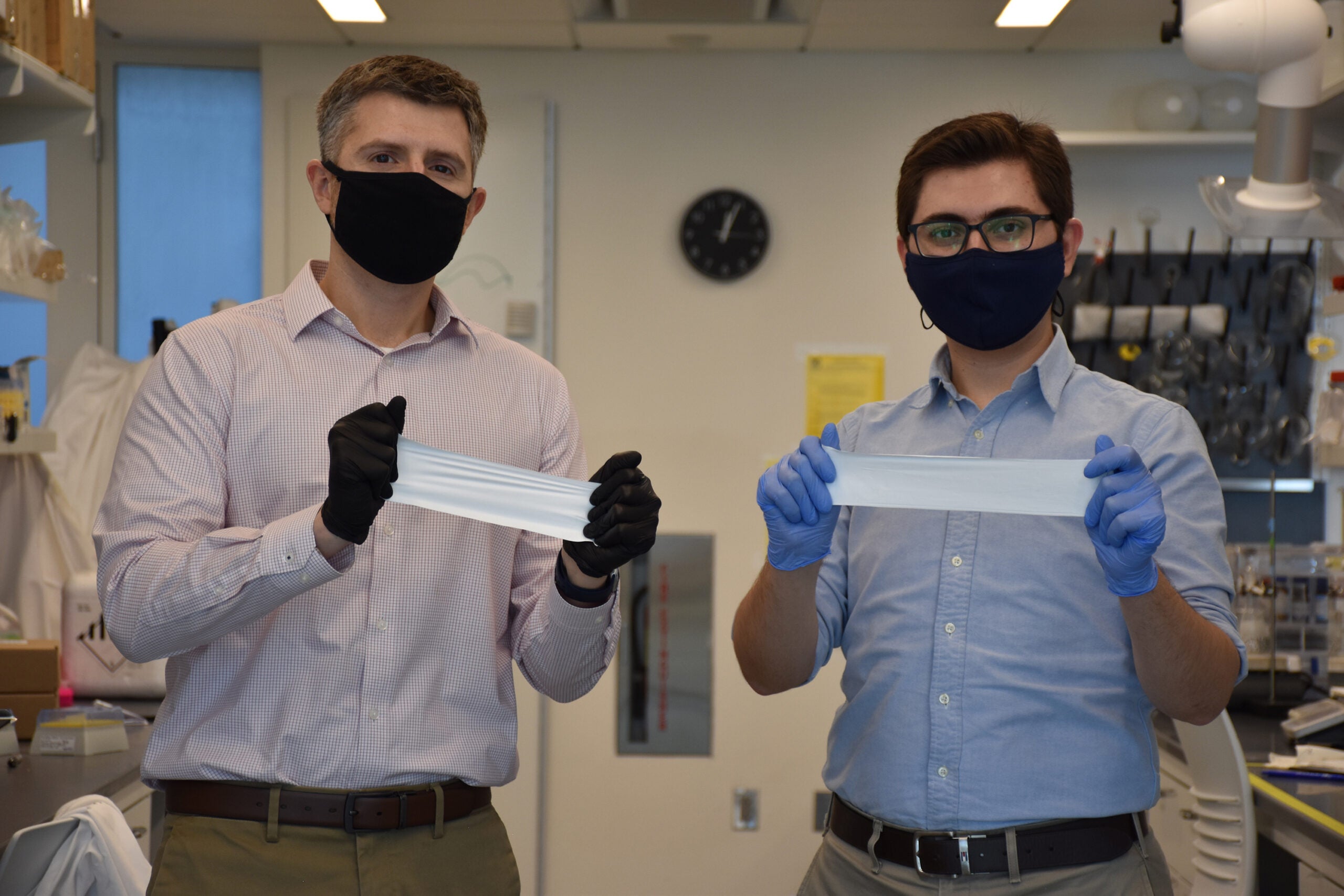KINGSTON, R.I. – January 21, 2021– Bandages are great for covering wounds, but they would be much more useful if they could also detect infections.
By embedding nanosensors in the fibers of a bandage, University of Rhode Island Assistant Professor Daniel Roxbury and former URI graduate student Mohammad Moein Safaee have created a continuous, noninvasive way to detect and monitor an infection in a wound.
“Single-walled carbon nanotubes within the bandage will be able to identify an infection in the wound by detecting concentrations of hydrogen peroxide,” said Roxbury, a researcher in URI’s College of Engineering.
Until now, the challenge with using nanotubes for this purpose has been immobilizing them in a biocompatible manner such that they stay sensitive to their surroundings, according to Roxbury.
“The microfibers that encapsulate the carbon nanotubes accomplish both of these tasks,” Roxbury said. “The nanotubes do not leach from the material, yet they stay sensitive to hydrogen peroxide within the wounds.”

The “smart bandage” will be monitored by a miniaturized wearable device, which will wirelessly (optically) detect the signal from the carbon nanotubes in the bandage. The signal can then be transmitted to a smartphone-type of device that then automatically alerts the patient or a health care provider.
“This device will solely be used for diagnostic purposes,” said Roxbury. “However, the hope is that the device will diagnose an infection at an early stage, necessitating fewer antibiotics and preventing drastic measures, such as limb amputation. We envision this being particularly useful in those with diabetes, where the management of chronic wounds is routine.”
The technology behind the smart bandage is further described in an article published in Advanced Functional Materials. Roxbury, Safaee and URI doctoral student Mitchell Gravely authored the article.
Safaee, who completed his doctorate in chemical engineering at URI in December 2020, learned how to create polymeric fibers as an undergraduate student prior to coming to URI.

“Professor Roxbury was very supportive of the idea of designing wearable technologies based on carbon nanotubes and I was excited to take the lead on the project,” said Safaee.
Working in Roxbury’s NanoBio Engineering Laboratory in the Fascitelli Center for Advanced Engineering, Safaee used several advanced technologies to make the bandage a reality.
“We designed and optimized a microfabrication process to precisely place nanosensors inside the individual fibers of a textile,” said Safaee. “We utilized cutting-edge microscopes to study the structure of the materials that we produced. I also utilized a home-built, near-infrared spectrometer to optimize the optical features of the textiles.”
The next stage of the project will involve the verification that the bandages function properly in a petri dish with live cultured cells that would be found in wounds.
“These cells we’ll be using are known as fibroblasts and macrophages (white blood cells) that produce hydrogen peroxide in the presence of pathogenic bacteria,” said Roxbury. “If all goes well, we’ll move to ‘in vivo’ testing in mice. At that point, we would find a collaborator who specializes in these animal wound models.”
Testing has focused on small bandage samples, but the technology can be applied easily to much larger bandages.
“There really is no limitation in terms of the size,” said Roxbury. “In fact, this technology will be most useful in large bandages. Larger bandages can be more of a nuisance to remove and reapply, but our device won’t need to be removed to enable detection.”
While Roxbury moves forward with the project, Safaee has moved to the Massachusetts Institute of Technology for a postdoctoral position.
“I joined the Furst Lab in MIT’s department of chemical engineering to advance and diversify my research in the area of molecular diagnostics and screening technologies,” said Safaee. “I will specifically work on designing high throughput screening technologies based on nanomaterials for point-of-care diagnostics and drug discovery applications.”
Safaee is thankful for the experience he gained at URI.
“I learned invaluable skills at URI, including near-infrared microscopy and spectroscopy, nanomaterial fabrication, and optical instrumentation, which all helped me become an independent scientist in the field of nanobiotechnology,” stated Safaee.

